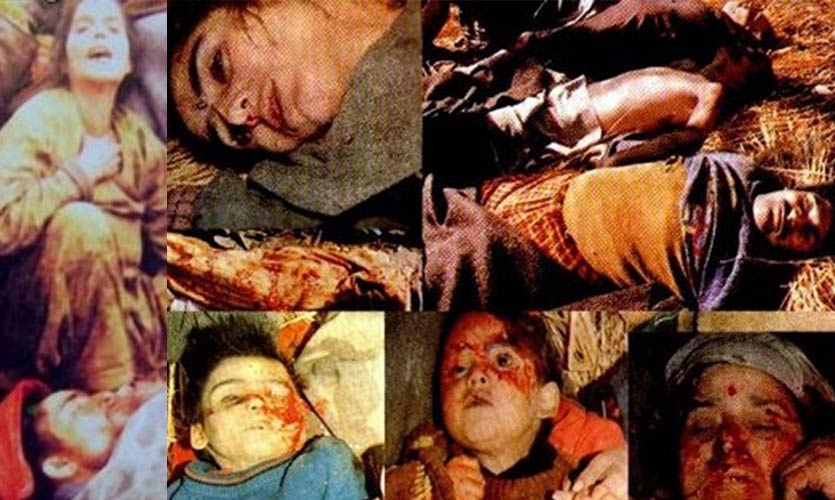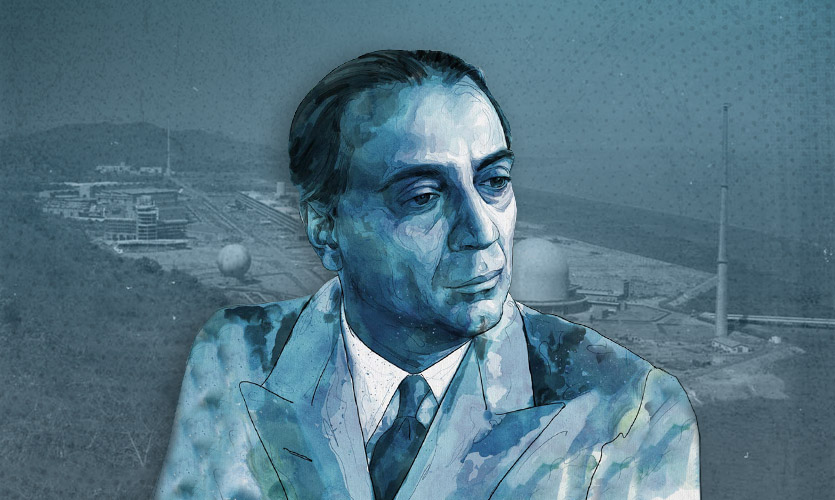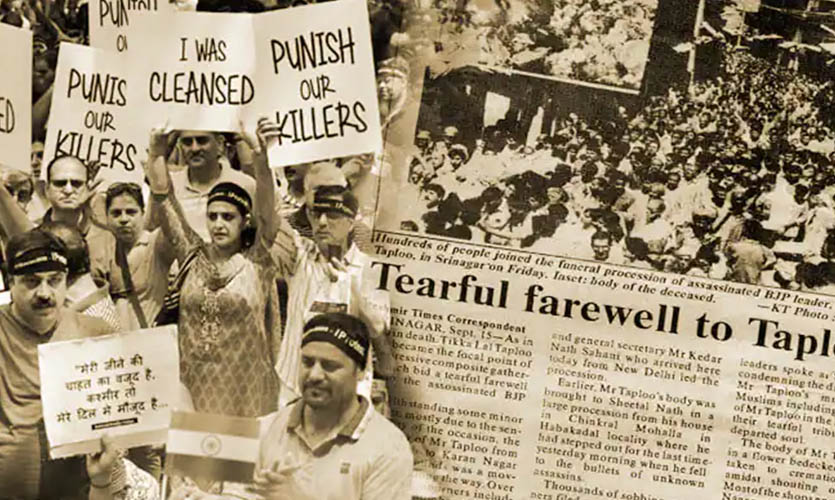While Arvind Kejriwal and party laughed and thumped their desks during the discussion on whether ‘The Kashmir Files’ should be made tax-free in Delhi so all classes of citizens can be informed of Kashmiri Pandits’ plight, a US based non-profit organisation – the International Commission for Human Rights and Religious Freedom (ICHRRF) – officially recognised the Kashmiri Hindu Genocide (1989-1991).
After holding a special public hearing on March 27, the ICHRRF has also called upon the Government of India, the Government of Union Territory of Jammu & Kashmir, and other international bodies and governments to recognise the atrocities committed during 1989-91, as acts of genocide. Although if evidence across centuries is considered, there is little room for debate.
How Is It A Genocide?
First recognised as a crime in 1946, genocide was declared an independent crime under the first human rights treaty signed at the United Nations General Assembly on December 9, 1948. The Convention on the Prevention and Punishment of the Crime of Genocide (Genocide Convention) has been ratified by 152 UN member states in the world, leaving out 40 countries, as of July 2019. Although as per the International Court of Justice (ICJ) and the UN’s understanding of international law, “they are all bound as a matter of law by the principle that genocide is a crime prohibited under international law” and “no derogation from it is allowed”.
Article II of the 1948 Genocide Convention narrows down the definition of genocide to two main elements:
(i) A mental element, in which, the “intent to destroy, in whole or in part, a national, ethnical, racial or religious group, as such” is apparent.
(ii) A physical element, which includes the execution of any of the following acts, committed with the previously described intent.
The exhaustive list of acts comprises:
- Killing members of the group
- Causing serious bodily or mental harm to members of the group
- Deliberately inflicting on the group conditions of life calculated to bring about its physical destruction in whole or in part
- Imposing measures intended to prevent births within the group
- Forcibly transferring children of the group to another group
Testimonies of Kashmiri Pandit migrants and documented evidence of crimes committed against them over the years, including those presented at the ICHRRF special hearing, are conclusive of the fact that the ethnic cleansing of the community from Kashmir Valley can be classified as a genocide. This is especially true if all seven exoduses of Kashmiri Pandits are taken into account, proving the intent to systematically eradicate their existence.
Killing/Causing serious bodily or mental harm to members of the group:
The advent of Islamic rule in Kashmir began in the 14th century, with Rainchan Shah establishing its foundation on Kashmiri soil. His short reign was followed by that of Udayanadeva, after which, in 1343 AD, his army commander Shah Mirza took control of the region. Next in line, during the Salátíni Kashmír (period of Kashmír Musalmáns) was Sultan Sikandar, an Iconoclast, termed so given “the intense zeal he showed in destroying the grand old temples which the Hindu Rájás had bequeathed to Kashmir”. As Sir Walter Roper Lawrence describes in his book ‘The Valley of Kashmir’, “Having glutted his vengeance on Hindu temples, Sikandar turned his attention to the people who had worshipped in them, and he offered them three choices, death, conversion, or exile.” Sir Lawrence has referenced Dr ML Stein’s translations of author Kalhana’s Rájataranginí, the chronicle which was continued by the historian and poet Jonaraja. “Kashmir can claim the distinction of being the only region of India which possesses an uninterrupted series of written records of its history, reaching back beyond the period of Muhammadan conquests and deserving the name of real chronicles,” Sir Lawrence quotes Dr Stein. “Many fled, many were converted, and many were killed, and it is said that this thorough monarch burnt seven maunds of sacred threads of the murdered Brahmans.”
During the Shahán-i-Durání – the period of the Pathans – Asad Khan was the first to dole out his savagery. “It was his practice to tie up the Pandits, two and two, in grass sacks and sink them in the Dal Lake. As an amusement, a pitcher filled with ordure would be placed on a Pandit’s head and Musalmáns would pelt the pitcher with stones till it broke, the unfortunate Hindu being blinded with filth,” narrates Sir Lawrence. “The Pandits who formerly wore moustaches, were forced to grow beards, turbans and shoes were forbidden, and the ‘tika’ or forehead mark was interdicted.”
“Mir Hazar was another fiend who used leather bags instead of grass sacks for the drowning of Brahmans.” Seven maunds (approximately 261 kgs) of Janeu were recovered from Dal Lake after over one lakh Kashmiri Pandits were drowned at what is now known as Bhatta Mazaar (graveyard of Kashmiri Pandits). There are similar instances from 1990 and the following time, when bodies of Kashmiri Hindus were found floating in the Jhelum River, some of them with their hands and feet tied.
As per Sir Lawrence’s account of the consolidated history of the valley, “Kashmiris met with little mercy at the hands of the Sikhs”, during the subsequent rule of Punjab’s Ranjit Singh. “The Sikhs seem to look upon the Kashmírians as little better than cattle,” Sir Lawrence quotes a translation of the Rájataranginí.
Since the murder of Pt Tika Lal Taploo on September 14, 1989, by Jammu and Kashmir Liberation Front (JKLF) militants, 219 Kashmiri Pandits have been killed in the region as a result of targeted attacks. Although the NGO Roots in Kashmir has alleged that 215 FIRs have been lodged over the years, relating to the murder of over 700 Kashmiri Pandits during 1989-90 and the succeeding years. This does not include the survivors of targeted assaults, the most recent incident being an attempt on the life of Bal Krishan in Shopian, on April 4, 2022.
Deliberately inflicting on the group conditions of life calculated to bring about its physical destruction in whole or in part:
As per first hand accounts, “jihadi” videos from Afghanistan started appearing on home cassettes in Kashmiri Muslim households, after young boys came back from “training”. A Kashmiri Pandit migrant confides, “I started noticing a gradual change in my friends and classmates around me. It started small. The boys started keeping longer beards and the girls who used to interact with us easily stopped associating with us and started wearing burqas.”
A Kashmiri Pandit community member recalls, “We could never celebrate India. Be it an auspicious occasion such as August 15, or an India-Pak cricket match. We used to expect a shower of stones after every match… it would either be in celebration of Pakistan winning or in sorrow of India winning. So we would switch off all lights and try to sleep while ‘they’ vandalised the neighbourhood, breaking street lamps and damaging other property. It came natural after a while”
On condition of anonymity, she further shares, “Bitta Karate was one of the students that my father used to teach, and he was friendly with my brother. While crossing paths this one time Bitta checked with him if I was his sister and then let us pass unharmed. My brother, a member of the RSS, wound up on the JKLF hit list a few days later.”
As per first person narration of events by several people living in Kashmir Valley at the time, warning notices were stuck outside the door of almost every Kashmiri Pandit household, with male members on the JKLF and Hizb-ul-Mujahideen hit lists. Disappearances, kidnappings, and rapes of members of the minority community became common place. Furthermore, the conditions imposed on the community in refugee camps, as a direct result of migration, amount to a humanitarian disaster, with survivors of targeted religious violence falling prey to snakes, scorpions, and unbearable heat.
Imposing measures intended to prevent births within the group/Forcibly transferring children of the group to another group:
The most obvious developments proving this intention is the forced conversion of Kashmiri Pandits. Another source who lived in Srinagar at the time recounts, “I had a professor who was Muslim, who used to claim extremely openly that his ancestors were Kashmiri Pandits. He even told us that there were still pictures of them in his house, where they were sporting traditionally Hindu dresses.”
Senior Congress leader Ghulam Nabi Azad recently said in an interview, “All the Muslims in Kashmir have been converted from the Kashmiri Pandit community… I have said it in Parliament… my ancestors 600 years ago were also Kashmiri Pandits.”
The slogans of “raliv, tsaliv, ya galiv” – convert, flee, or die – that echoed across Kashmir Valley in 1990, including on mosque loudspeakers, still echo strong in first generation migrants’ ears. As a Kashmiri Pandit further informs, these slogans were accompanied with the chanting of another: “As ch mangaan aazaadi, batt bagar, battni saan (“We want freedom, without Pandit men, with Pandit women”).
The events in Kashmir, throughout its entire documented history, and the events of 1989-91, fulfil not just one of the conditions listed under the UN’s definition of genocide, but all. Moreover, they also satisfy the additional provisions. The UN states, “Importantly, the victims of genocide are deliberately targeted – not randomly – because of their real or perceived membership of one of the four groups (national, ethnical, racial or religious) protected under the Convention.” It also mentions, “Genocide can also be committed against only a part of the group, as long as that part is identifiable (including within a geographically limited area) and “substantial.”
A press release issued by the Union Ministry of Home Affairs confirms, “As per the report of Relief Office setup in 1990 by the Government of Jammu and Kashmir, 44,167 Kashmiri Migrant families are registered who had to move from the valley since 1990 due to security concerns. Out of these, the count of registered Hindu Migrant families is 39,782.” Most estimates put the total number of displaced Kashmiri Pandits over 100,000, about 70 percent of the community’s strength in Kashmir Valley at the time.
Why Is The Classification Of Genocide Important?
On June 22, 1990, the BSF arrested JKLF commander Farooq Ahmed Dar, also known as Bitta Karate, under the Public Safety Act and in relation to 19 terrorism related cases. In an interview in 1991, Bitta Karate admitted to killing his childhood friend and RSS member Satish Kumar Tickoo, the first of about 20 murders of Kashmiri Pandits committed by him. He also admitted to being involved in many more and leading the militancy charge during 1989-90.
He was released on indefinite bail on October 25, 2006, and was welcomed with open arms by the Kashmiri Muslim community. He went on to become the chairman of the JKLF, now allegedly non-violent. His freedom went uncontested by successive J&K governments under Ghulam Nabi Azad, Mufti Mohd Sayeed, Omar Abdullah, and Mehbooba Mufti, until the National Investigative Agency arrested Bitta Karate on charges of terror funding, creating trouble in Kashmir Valley, and “conspiring to wage war against the government” a few years ago.
Following the release of ‘The Kashmir Files’, most Indians and the global community acknowledged and came out in support of the Kashmiri Pandit community. On March 24, 2022, Roots in Kashmir filed a curative petition in the Supreme Court, seeking an independent probe into the alleged genocide and mass killings of Kashmiri Pandits during 1989-90 and the subsequent years. The Supreme Court, in 2017, had rejected a writ petition regarding the same. “You (petitioner) sat over it for (the) last 27 years. Now tell us from where the evidence will come,” the SC Bench comprising Chief Justice JS Khehar and Justice DY Chandrachud had said. The apex court had dismissed the pleas as well as the review petition filed following it.
The curative petition filed last month is the last legal recourse available to the community. “This really amounts to failure of justice or gross miscarriage justice caused to the petitioner in view of the fact that the petitioner has stated in the writ petition as well as in review petition that this court has not only entertained the writ petition and also passed necessary direction for trial etc. in cases where the incident pertains to even more than 30-32 years,” read the petition. It reiterated that the Court has previously taken cognisance of similar cases pertaining to the 1984 anti-Sikh riots, which had lapses of over 33 years. The petition by Roots in Kashmir also pointed out that the top court had “failed to appreciate” that out of 700, although FIRs were lodged in more than 200 cases, not a single charge sheet was filed.
Noteworthy, 32 years later, on March 30 this year, Bitta Karate’s murder trial began after Satish Tickoo’s family moved the Srinagar Sessions Court for a “proper” and “fair” probe in his gruesome killing.
Ethnic cleansing is not classified as an independent crime under international law. However, in cases of genocide, international law dictates that the perpetrators of such vile acts of violence be punished by the State, or an international body with jurisdiction. Article IV of the Genocide Convention states: “Persons committing genocide or any of the other acts enumerated in article III shall be punished, whether they are constitutionally responsible rulers, public officials or private individuals.”
While there is finally a sense of acknowledgement of the atrocities committed against Kashmiri Pandits, proper recognition of the crimes could mean the deliverance of long-pending justice, and holding the current government to its promise of rehabilitation of Kashmiri Pandits, which is yet to be fulfilled. This would also include holding accountable the various so-called leaders of Jammu and Kashmir such as Dr Farooq Abdullah, former chief minister and the alleged co-founder of JKLF.
* Sources kept anonymous for safety reasons.
The Horus Eye is a weekly column written by Divya Bhan analysing current affairs and policies. This column does not intend or aim to promote any ideology and does not reflect the official position of The Sparrow.
Also read: 32 Years Of Fault Lines: Time To Reopen Kashmir Files?
Also read: “Convert, Flee, Or Die”: 32 Years Of The 1990 Exodus Of Kashmiri Pandits










